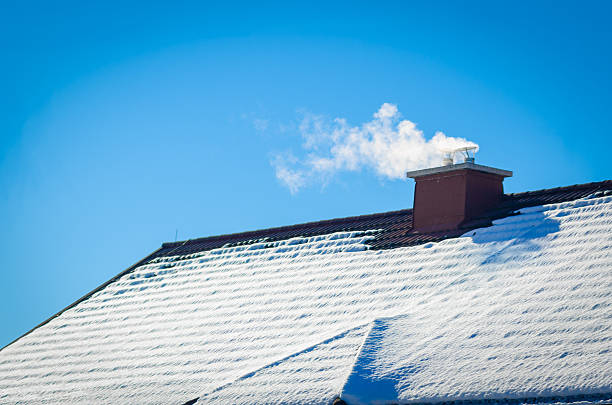Winter is here, and for many homeowners, it’s a season when roofing problems come to light. Ice dams, leaks, and storm damage can make a new roof a pressing necessity. But can you install a roof during the colder months and still maintain a valid warranty? The answer is yes, as long as certain precautions are taken and temperatures are monitored closely. Let’s explore why 40 to 45 degrees Fahrenheit is the ideal range for winter roofing and how to ensure your new roof comes with a valid warranty.
The Challenges of Winter Roofing
Installing a roof in winter poses unique challenges. Asphalt shingles, the most common roofing material, can become brittle in cold temperatures, making them prone to cracking during installation. Adhesive strips on shingles also require warmth to bond properly, which is essential for the roof’s durability and weather resistance. These issues highlight the importance of choosing the right conditions and a knowledgeable contractor.
Why 40 to 45 Degrees Fahrenheit Matters
The temperature sweet spot for roofing installation in winter is between 40 and 45 degrees Fahrenheit. At this range:
- Shingle Flexibility: Asphalt shingles remain flexible enough for proper installation without cracking.
- Adhesive Activation: Sealant strips on shingles can activate more effectively, either through natural sunlight or additional measures like heat guns if needed.
- Warranty Protection: Many manufacturers’ warranties stipulate that shingles must be installed within recommended temperature ranges to ensure their integrity and performance.
By adhering to these conditions, you protect your investment and maintain compliance with manufacturer guidelines.
Tips for a Successful Winter Roofing Project
If you’re considering roofing work this winter, here’s how to ensure success:
- Hire Experienced Professionals: Work with a roofing contractor who has experience installing roofs in colder weather. They’ll know how to handle materials carefully and address temperature-related challenges.
- Monitor the Weather: Aim to schedule your installation during a period of consistent temperatures in the 40-45 degree range.
- Use Quality Materials: Consider shingles with enhanced adhesive properties designed for colder climates, and discuss additional measures, such as manually sealing shingles, with your contractor.
- Allow Time for Curing: If the sealant doesn’t activate immediately due to low temperatures, ensure the roof is exposed to direct sunlight when possible or allow extra time for the bonding process.
Benefits of Winter Roofing
Choosing to install a roof during winter can have its advantages. Contractors often have more availability during the off-season, and you may benefit from off-peak pricing. Additionally, addressing roofing issues promptly prevents further damage from snow and ice buildup.
Trust the Experts
At Happy Home Roofs, we specialize in year-round roofing solutions. Our team is trained to handle winter installations, ensuring your roof is built to last and backed by a valid warranty. Don’t let the cold weather delay necessary repairs or replacements—contact us today to schedule your winter roofing project.

